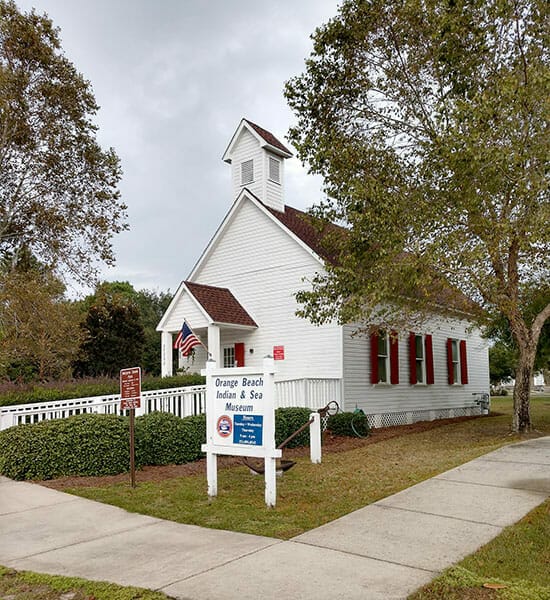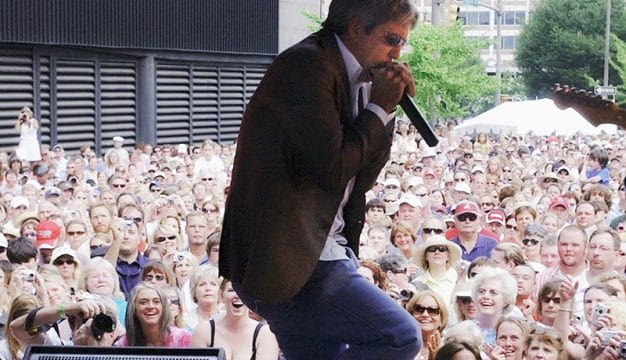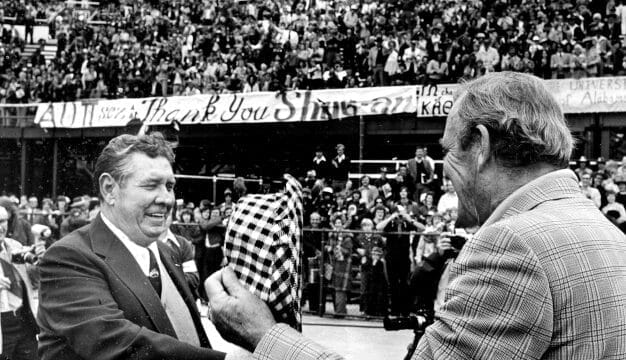Orange Beach Indian and Sea Museum
 Orange Beach Indian and Sea Museum
The Orange Beach Indian and Sea Museum, founded in 1995, is a free historic attraction with a focus on the local history of Orange Beach, Baldwin County. Housed in the oldest intact school building in Orange Beach, the museum narrative pays special attention to the history of the school house, while also incorporating the surrounding area including Fort Morgan, Gulf Shores, and portions of northern Florida. The museum’s collections include historic photos, memorabilia, fishing and nautical equipment, Native American artifacts, and a variety of fossils.
Orange Beach Indian and Sea Museum
The Orange Beach Indian and Sea Museum, founded in 1995, is a free historic attraction with a focus on the local history of Orange Beach, Baldwin County. Housed in the oldest intact school building in Orange Beach, the museum narrative pays special attention to the history of the school house, while also incorporating the surrounding area including Fort Morgan, Gulf Shores, and portions of northern Florida. The museum’s collections include historic photos, memorabilia, fishing and nautical equipment, Native American artifacts, and a variety of fossils.
Constructed by fishing captain James Clifford Callaway in 1910, the one-room school building now has white wooden siding and a red roof. The school was used for 20 years and held classes for about three months each year, but closed when a larger school was opened in Foley. The building then became the temporary home of a Baptist church and was also used as a community center. The school building was finally sold to Marvin Robinson, who moved the structure to Bay Circle and used it for storage. First Baptist Church of Orange Beach was eventually built on the school’s former site. Later, the school house was donated to the city of Orange Beach by Marvin and Mary Robinson, and was designated to be used as a museum. The museum’s collections were formed with items donated by the Callaway family, members of the community, and former pupils of the school. The building was moved to a spot behind the city’s recreation center and opened as a museum in 1995. In 1999, the school house was moved to its current location near city hall in an effort to make it more accessible to the public.
Native Americans occupied the Orange Beach area, and many Native American artifacts are displayed in this museum. The most spectacular item in the collection is a dugout canoe of cypress wood that spans 35 feet in length. Countless sherds from Native American pottery found at Ono Island are displayed, and are thought to be up to 1,000 years old. Also on exhibit are fossilized remains of crinoids, marine animals related to star fish and sea urchins, whose exoskeletons were used for bead making by Native Americans. Other Native American artifacts from the Orange Beach area include projectile points, effigies, Indian gaming stones, a paint pot and ochre used for body decoration, cutting tools, a bone drill, and a pictograph etched in stone. Projectile points and pieces of pottery from Fort Morgan and a hide scraper from central Florida are also included in the museum holdings.
The museum collections also focus on natural history. Items in this category include petrified wood, shark teeth, and other rocks and fossils from Kentucky and Michigan. Sea shells of various sizes and types, starfish, sand dollars, and mounted fish are housed in exhibit cases. Another section of the museum portrays nature’s role in the area’s economy and the importance of the turpentine industry. Several tools and photographs from the turpentine distillation and manufacturing process in Baldwin County make up part of the collection. They show how sap from certain kinds of conifers prevalent in the area was harvested and refined to make turpentine.
Farming, fishing, and boating each played a part in local history and are represented in the museum. Artifacts relating to these activities include a milking stool, can, and strainer, as well as antique boat motors, steering wheels, anchors, fishing rods, reels, and lures. The museum features photograph albums and scrapbooks documenting Hurricane Ivan’s destruction in Orange Beach in 2004. The museum also holds a scrapbook featuring newspaper articles on Fort Morgan State Historic Site, as well as a book containing newspaper articles and reminiscences from local fisherman Nolan C. Calloway regarding World War II in the Gulf. Several antique books are on display. Objects from the original school house, such as the school bell, a desk, and an oil lamp are featured as well.
The museum is owned and administered by the city of Orange Beach. While the museum is free, visitors are asked to consider giving a donation. The staff consists of one paid employee and occasional volunteers.



